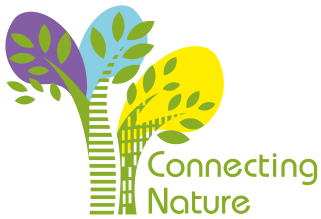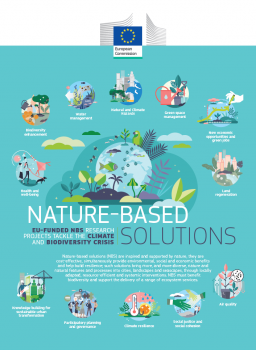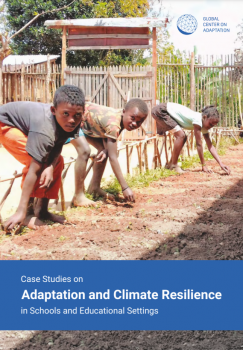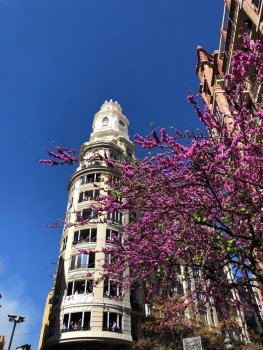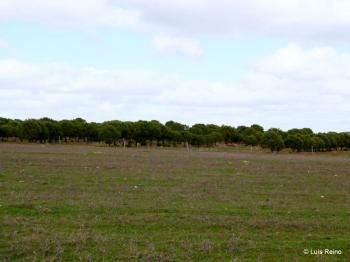Products
Filters
Marketplace
Nature-based solutions-EU-funded NbS research projects tackle the climate and biodiversity crisis
"Nature-based solutions (NbS) are inspired and supported by nature, they are cost-effective, simultaneously provide environmental, social and economic benefits and help build resilience; such solutions bring more, and more diverse, nature and natural features and processes into cities,
- Document
A Comprehensive Overview of Nature-Based Solutions
The term Nature-Based Solutions (NBS) comprises various approaches that address social and environmental challenges in a way that is beneficial to both biodiversity and human well-being. To establish a common understanding of the NBS concept among all stakeholders in the ENABLS project, this
- Document
Use of Bite technology for tree infusion in chestnut groves
Endotherapy offers an efficient alternative for treatments application in chestnut groves
Study on specific design elements of biodiversity offsets: Biodiversity metrics and mechanisms for securing long term conservation benefits
The EU's biodiversity strategy specifies a target to halt the loss of biodiversity by 2020. A No Net Loss initiative is an important component of the EU's strategy to achieve this. In accordance with the mitigation hierarchy, it will seek to strengthen efforts to first avoid, then
Carbon Farming for Climate, Nature, and Farmers report
The EU is promoting carbon farming as a new business model to deliver climate action in agriculture. To ensure the EU harnesses the full win-win-win potential of carbon farming, the EEB sets out the concrete solutions carbon farming should prioritise, and makes five key recommendations in this
Case Studies on Adaptation and Climate Resilience in Schools and Educational Settings
Educational institutions can play an instrumental role in local level climate adaptation and resilience building. They create spaces for peer learning, innovative ideas, community awareness, and implement practical solutions. Sharing knowledge, best practices and concrete experiences on how to
Stated preference valuation
A family of techniques which use individual respondents statements about their preferences to estimate change in utility associated with a proposed increase in quality or quantity of an ecosystem service or bundle of services. Respondents are presented with one or more hypothetical policy or
Voices from the NetworkNature Nature-based Solutions Hubs - A booklet of success stories
NetworkNature is working to expand the nature-based solutions (NbS) community and provide support for implementing and amplifying NbS. One way we do this is by investing in relationships and working with local partners to grow locally-based networks. This booklet, produced in collaboration with the
INTERLACE MOOC on Nature-based Solutions: (6) MONITORING and evaluating NbS using a co-creation approach
Urban areas across the globe are facing unprecedented challenges—pollution, climate change, urban sprawl—and traditional solutions are falling short. The INTERLACE project’s Massive Open Online Course showcases how nature-based solutions offer a promising approach to help create resilient,
Capturing the Values and Making the Business Case for Nature-Based Solutions - a step by step guide
This guide is designed to facilitate Nature based solutions adoption in urban areas by leveraging the economic value and countless benefits (also referred as ‘’non-monetary values’’) NBS have on communities and ecosystems. By providing step-by-step instructions and tools for capturing and
EDGES - Ecologically Scaled Edge Responses: Patterns, Mechanisms and Predictive Modelling
Edge effects are among the key processes affecting biological populations and communities in fragmented landscapes, mediating landscape-scale patterns in species richness and abundance. This has been the subject of intense research over the past decades, demonstrating that edge-responses are
Evaluating Ecological Restoration Success: A Review of the Literature
Assessing the success of ecological restoration projects is critical to justify the use of restoration in natural resource management and to improve best practice. Although there are extensive discussions surrounding the characteristics that define and measure successful restoration, monitoring or
VEG-GAP Information Platform
The VEG-GAP Information Platform is a web-based multi-purpose information platform exploiting the final results of the project. The platform uses Atmospheric Modelling Systems outputs. It is a collaborative framework among end-users (which can interact with data analytics), governance (facilitating
Video: The future we can and must chose: nature-based solutions
This is a creative product of the Nature-based Solutions Initiative at the University of Oxford explaining nature-based solutions as a concept and their importance (www.naturebasedsolutionsinitiative.org). Illustrations by Cécile Girardin and Isabel Key; animation by Matthew Mullholland.
- Document
OPERAS D4.7 Implementation Guidance
D4.7 developed guidance for the design and implementation of schemes that can use the NC/ES concepts: Payment for Ecosystem Services (PES); Offsetting; Standards, Certificates, Reporting, Labelling and Procurement; Spatial Planning, Regulation and Development Control; and Nature Based Solutions.
Green Cities Framework (GCF) Handbook
Cities of all sizes and types can develop effective strategies for nature-based solutions, allowing them to create innovative and inspiring ways to tackle major urban challenges, such as flooding and heat stress. Embedding nature-based solutions in this way in long-term city planning, development
Defining and assessing success in mainstreaming
This background paper draws on reviews of the mainstreaming targets and indicators of selected NBSAPs from countries at different stages of their mainstreaming process, and the approaches to assessing the success of mainstreaming biodiversity and other issues into development. Recommendations are
Ecosystem types of Europe
The dataset combines the Corine based MAES ecosystem classes with the non-spatial EUNIS habitat classification for a better biological characterization of ecosystems across Europe. As such it represents probabilities of EUNIS habitat presence for each MAES ecosystem type.
Nature-based Solutions for Urban and Regional Water Resilience: What to do with too much (dirty) water
This policy brief explores the opportunities and challenges in the integration of Nature-based Solutions (NbS) into urban and regional water resilience planning. The brief draws from research, policy, and good practice from the wider NbS community, and presents recommendations to enhance the
The SPIRAL synthesis report: A resource book on science-policy interfaces
This is a resource book on good practices to improve the effectiveness of existing science-policy interfaces or develop new ones. The resource book synthesises information gathered and research done throughout the SPIRAL project (‘Science-Policy Interfaces: Research, Action and Learning’). The
- 1 of 41
- next ›
